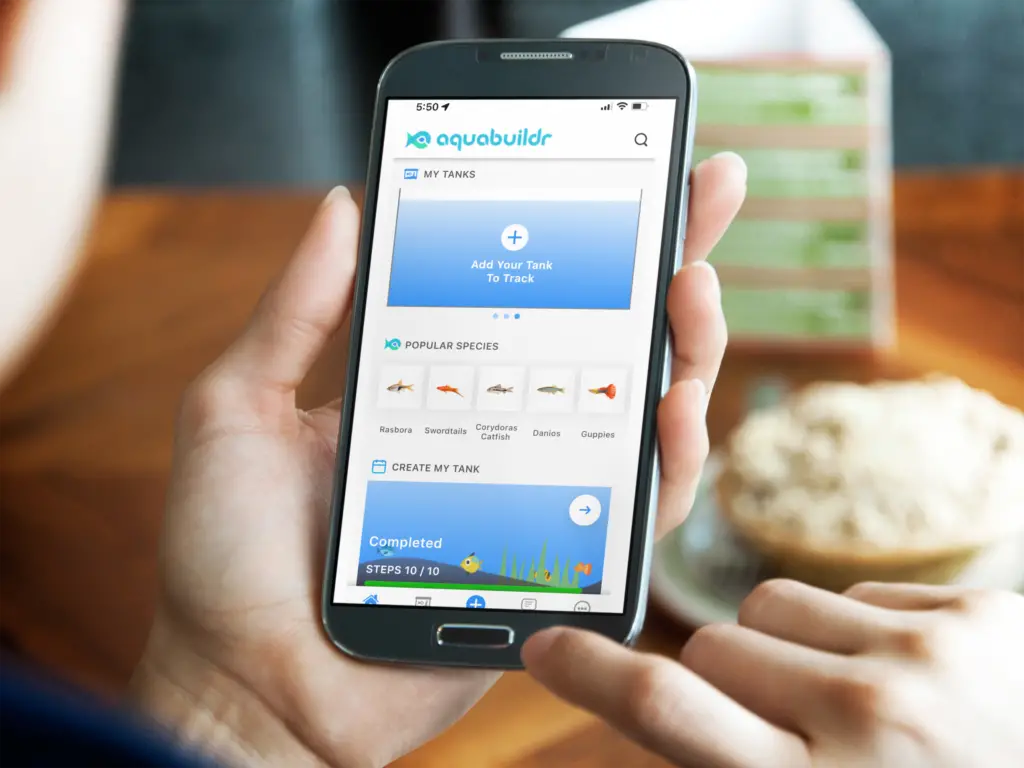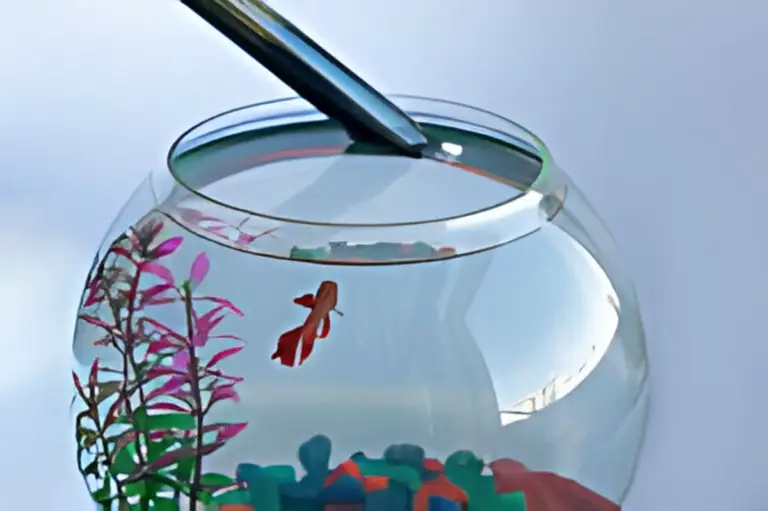Sunken Belly in Fish (Symptoms, Causes, and Treatment)
We all may be familiar with seeing bloated bellies, and usually, it causes little concern. Bigger bellies is a common occurrence in fish caused by a few factors like constipation, parasites, or swim bladder issues. Or maybe your fish are expecting!
However, things are a bit different when it comes to a sunken belly, or hollow belly. For most, seeing a sucked-in abdomen is a bit odd — and more concerning. Although not exclusive to any particular species of fish, it seems that African cichlids are more likely to experience this illness.
If your fish are showing signs of sunken belly and you’re wondering what to do, don’t! You’ve come to the right place. We’ll discuss all you need to know about this illness so you can help your finned friends with confidence. Let’s get to it!
What Is Sunken Belly?
A sunken belly is an inward curvature on a fish’s underbelly — between the end of the rib cage and the anal area. Instead of your usual naturally rounded or slightly bulged belly (as it would in healthy fish), the belly looks hollowed out or concave.
A sunken belly may suggest that your fish may not be in optimal health. Understanding the causes behind it depends on a few things like their nutrition, environment, and overall health.
Sunken Belly Symptoms

Obviously, the most noticeable symptom is your fish’s concave belly. However, there are other symptoms that could accompany the sunken belly, depending on the underlying cause. These can include:
- Hollowed belly: Your fish has an inward curvature on its underbelly. Depending on the causes, some fish may only show a slightly sucked in belly, whereas other fish’s are more noticeable.
- Lethargy: Your fish might be less active than usual or show a lack of interest in its surroundings.
- Poor appetite: Your fish may eat less or show little interest in food.
- Changes in feces: You might notice some changes in the color, consistency, or frequency of your fish’s feces.
- Physical weakness: Your fish could have difficulty swimming or maintaining their buoyancy.
Sunken Belly Causes
According to Aquarium Science, the most common causes of sunken belly in fish are:
- 40% from fish tuberculosis (TB) or mycobacteriosis
- 15% from hexamita (a parasite that causes hole in the head (HITH) disease)
- 10% from bacterial infections
- 5% from roundworms (a parasite)
- 30% from an unknown cause
Let’s go into more detail to help you better understand:
- Fish TB: This is like the fish version of tuberculosis. It’s caused by a tricky bacterium that can get into a fish’s system and spread, impacting its organs. Fish with TB might lose weight and their bellies can look sunken. It’s a tough one to treat and can be quite serious.
- Hexamita: This is a protozoan parasite that likes to hang out in fish intestines. If your fish gets it, you might notice they’re losing weight, their belly is getting hollow, and they might even have holes or pits on their head and body. It messes with the fish’s ability to get nutrients, contributing to that sunken belly look.
- Bacterial infections: These can cause a bunch of problems like fin rot, ulcers, and can make the fish really sick internally. When the infection gets bad, it can prevent the fish from getting the nutrients they need, which might lead to a sunken belly. These infections often pop up if something else is off, like poor water quality or a stressed immune system.
- Parasitic infections: Beyond Hexamita, other freeloaders like roundworms and tapeworms can also cause trouble. They live off the nutrients your fish needs, which can lead to poor nutrition and that telltale sunken belly. It’s a clear sign that these parasites are taking more than their share.
There are other potential causes, including:
- Starvation or malnutrition: This is pretty straightforward but super important. If fish aren’t getting enough to eat — or if their diet doesn’t contain the right nutrients — their bodies can’t maintain normal, healthy functions. This often results in visible weight loss and a sunken belly.
- Overcrowding: When too many fish are kept in a small space, it can lead to stress, competition for food, and poor water quality. All these factors can stress the fish and might lead to health issues like a sunken belly due to malnutrition or stress-induced diseases.
- Water quality issues: Poor water conditions — like incorrect pH, high ammonia, nitrites, or nitrates — stress the fish and can weaken their immune system. This dominos into their overall health, making them more susceptible to diseases and nutritional problems that can cause a sunken belly.
- Aging: As fish age, they might naturally eat less and become more susceptible to diseases. Their body condition can deteriorate, leading to symptoms like a sunken belly.
- Internal tumors or cancers: These serious conditions can interfere with the normal functioning of the fish’s internal organs, including those involved in digestion and nutrient absorption, which can lead to a sunken belly.
- Genetic issues: Some fish might be more prone to certain conditions due to their genetic makeup, which could lead to symptoms including a sunken belly, although this is less common.
Sunken Belly Treatment
With that all said, let’s help treat your finned friends! The two main stages of treating sunken belly syndrome are as follows.
Step 1: Quarantine
You can learn how to quarantine here. But, here’s a quick summary:
First step in the quarantine process is to remove the ill fish from the general population. This is particularly true for bigger societies of African cichlids, as they tend to congregate in groups. In these circumstances, a single contagious illness may cause chaos throughout their ranks. Verify that the hospital tank’s parameters are steady and ideal, matching those of the main tank.
Step 2: Assessing the Disorder
Get into the nitty-gritty and start gaining more insight into the situation. When you consider the various causes, you can paint a clearer picture of what caused the sunken belly in your particular tank. By taking this step, you may create a customized treatment plan that can speed up your fish’s recovery.
Step 3: Treatment
Once you’ve determined the cause, you can start to treat your fish. Select the treatment according to the underlying cause.
If Caused by Fish TB
- Unfortunately, there’s no direct cure for fish TB. The best approach is to isolate infected fish to prevent spreading the disease.
- However, some may suggest you treat it with over-filtration and UV.
- Otherwise, you can maintain excellent water quality and nutrition to support the fish’s health.
- Euthanasia might be considered for severely affected fish to prevent suffering and further spread of the disease.
If Caused by Hexamita
- Treat with anti-protozoal medications specifically designed to target Hexamita. Here are a few quick steps you can take.
- Ensure a nutritious diet with easily digestible foods to support the fish’s recovery.
- Maintain optimal water conditions to reduce stress and support the fish’s immune system.
If Caused by Bacterial or Parasitic Infection
- Treat with the appropriate medications like antibiotics for bacterial infections or anti-parasitic medications for parasitic infections.
- Follow the instructions provided with the medication carefully, including dosage and duration.
- Monitor the fish closely during and after treatment for any signs of improvement or worsening.
If Caused by Starvation or Malnutrition
- Improve the fish’s diet by offering various high-quality foods rich in essential nutrients.
- Consider adding supplements or vitamins to the diet if necessary.
- Feed smaller, more frequent meals to encourage fish to eat and prevent overeating.
If Caused by Overcrowding
- Reduce the number of fish in the tank to relieve overcrowding.
- Ensure adequate space and hiding places for each fish to reduce stress.
- Monitor water quality closely and perform regular water changes to maintain optimal conditions.
If Caused by Water Quality Issues
- Immediately address any water quality issues by performing partial water changes and adjusting filtration.
- Test water parameters regularly and make necessary adjustments to maintain optimal conditions.
- Consider using water conditioners or treatments to neutralize harmful substances in the water.
Must-Have Medication for Sunken Belly
If you’re not sure what type of bacterial or parasitic infection your fish might have, we recommend using Ron’s Cichlids Medicated Food Mix.
The beauty of this food is it consists of various excellent medications that can treat different types of internal and external parasites, as well as bacterial and fungal infections. It’s like treating two (or more) causes with one food.
Ron’s medicated food includes the following medications:
- MetroPlex
- KanaPlex
- NeoPlex
- Praziquantel
- Levamisole
- SulfaPlex
- GarlicGuard
- Epsom Salt
These medications may help treat the following:
- Internal infections like bloating, abnormal stools, loss of appetite, and weight loss
- Internal parasites like cryptocaryon, hexamita, tape worms, and flatworms
- Bacterial infections
- Fin or tail rot
- HITH disease
- Ich, and so much more!
So, feel free to try out Ron’s Cichlids Medicated Food Mix. Remember to use the code KAVEMAN12 to get a discount!
We had to try out this new product — see for yourself:
Sunken Belly FAQs
Got any burning questions? Maybe we have the answer down below!
How Long Can Fish Live With Sunken Belly?
Even if you are aware of the cause, you never know how long your fish may live with sunken belly syndrome. Each fish is different and may react differently to sunken belly. In the grand scheme of things, this is why treating a sunken belly in its early stages is so crucial.
Why Aren’t My Fish With Sunken Bellies Not Eating?
Fish with sunken bellies will typically have a lack of appetite and lethargy. There can be many reasons like parasites, bacterial infections, and digestive problems. Stress could also be a factor.
Are African Cichlids Prone to Sunken Belly?
Yes. African cichlids are more prone to getting a sunken belly. When it comes to their water parameters, food, and even tank mates, African cichlids may be a bit arrogant.
Stay Vigilant With Aquabuildr!
As always, prevention is better than the cure! We hope this guide provided all the necessary information you need to treat a sunken belly.
To stay ahead of the curve and ensure your fish are kept in optimal conditions, consider adding Aquabuildr to your arsenal. With its intelligent algorithm and customizable features, Aquabuildr takes the guesswork out of creating and managing your aquarium.
Download Aquabuildr for FREE on Google Play Store or Apple App Store today and feel the power of smart fish-keeping!

-
Sunken Belly in Fish (Symptoms, Causes, and Treatment)
Are your fish showing signs of a sunken belly? Don’t worry! This guide provides all the information you need to help your finned friends now!







